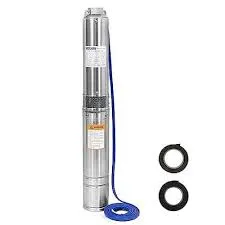Nov . 27, 2024 07:27 Back to list
Common Issues with Deep Well Submersible Pumps and Their Solutions
Common Problems with Deep Well Submersible Pumps
Deep well submersible pumps are widely used in various applications, ranging from agricultural irrigation to municipal water supply. These pumps are designed to operate submerged in water, pushing water to the surface through a pipeline. Despite their efficiency and robust design, they can encounter several common problems that can affect their performance and longevity. This article explores some of these issues, potential causes, and recommended solutions.
1. Overheating
One of the most prevalent problems with deep well submersible pumps is overheating. This can occur for several reasons, including low water levels, excessive run times, or electrical issues. When a pump runs dry (i.e., when water levels drop below the pump intake), it can quickly overheat and lead to motor failure.
*Solution* Regular monitoring of water levels is essential to prevent overheating. Installing low-level sensors can help alert operators if water levels are critically low. Additionally, implementing a timer to limit continuous operation can prevent excessive run times.
2. Clogging
Clogging is another common issue facing submersible pumps, particularly in wells where sediments, debris, or biofouling are present. This can lead to reduced flow rates and increased wear on pump components.
*Solution* Regular maintenance is critical. This includes periodic flushing of the pump system and using filters to minimize debris entering the pump. If clogging persists, it may be necessary to inspect the well casing and surrounding materials for sources of contamination.
3. Electrical Failures
Electrical failures can stem from multiple sources, including power surges, cable damage, or faulty connections
. Such issues may lead to pump malfunction or complete failure, which can be detrimental in applications where reliability is crucial.*Solution* Implementing a surge protection device can help safeguard against electrical spikes. Regular inspections of electrical connections, cables, and junction boxes can identify potential issues before they lead to major failures. Using high-quality materials and proper installation techniques can also enhance the durability of electrical components.
deep well submersible pump problems

4. Corrosion
Corrosion is a significant concern, especially in wells with high mineral content or aggressive water conditions. This can lead to a decrease in pump efficiency and structural integrity, eventually necessitating repairs or replacement.
*Solution* Choosing pumps made from corrosion-resistant materials can extend the lifespan of submersible pumps. Additionally, applying protective coatings and conducting regular inspections can help identify corrosion before it becomes an issue.
5. Mechanical Failure
Mechanical failures, such as bearing wear or impeller damage, can occur due to improper installation, lack of maintenance, or operating the pump outside its designed parameters. This can lead to diminished performance and potentially catastrophic failures.
*Solution* Adhering to proper installation guidelines and operational protocols is vital. Routine maintenance checks, including lubrication of moving parts and inspection of wear components, can help catch mechanical issues early. If a problem is detected, it’s essential to address it immediately to avoid further damage.
6. Low Flow Rate
A decrease in flow rate can be indicative of several underlying issues, such as pump wear, blockages, or problems with the well itself. This drop in performance can affect overall system efficiency and service delivery.
*Solution* Identifying the root cause of low flow rates is essential. This might involve inspecting the pump for wear or blockages, checking the alignment, and evaluating the well conditions. Proper sizing of the pump for the specific application and regular performance assessments can help maintain optimal flow rates.
Conclusion
Deep well submersible pumps are invaluable for many applications, but they are not without their challenges. By understanding the common problems these pumps face and implementing suitable preventive measures, operators can significantly enhance the reliability and lifespan of their pumping systems. Regular maintenance, timely repairs, and an understanding of operational conditions are critical to ensuring optimal performance and minimizing downtime.
-
Submersible Water Pump: The Efficient 'Power Pioneer' of the Underwater World
NewsJul.01,2025
-
Submersible Pond Pump: The Hidden Guardian of Water Landscape Ecology
NewsJul.01,2025
-
Stainless Well Pump: A Reliable and Durable Pumping Main Force
NewsJul.01,2025
-
Stainless Steel Submersible Pump: An Efficient and Versatile Tool for Underwater Operations
NewsJul.01,2025
-
Deep Well Submersible Pump: An Efficient 'Sucker' of Groundwater Sources
NewsJul.01,2025
-
Deep Water Well Pump: An Efficient 'Sucker' of Groundwater Sources
NewsJul.01,2025
-
 Submersible Water Pump: The Efficient 'Power Pioneer' of the Underwater WorldIn the field of hydraulic equipment, the Submersible Water Pump has become the core equipment for underwater operations and water resource transportation due to its unique design and excellent performance.Detail
Submersible Water Pump: The Efficient 'Power Pioneer' of the Underwater WorldIn the field of hydraulic equipment, the Submersible Water Pump has become the core equipment for underwater operations and water resource transportation due to its unique design and excellent performance.Detail -
 Submersible Pond Pump: The Hidden Guardian of Water Landscape EcologyIn courtyard landscapes, ecological ponds, and even small-scale water conservancy projects, there is a silent yet indispensable equipment - the Submersible Pond Pump.Detail
Submersible Pond Pump: The Hidden Guardian of Water Landscape EcologyIn courtyard landscapes, ecological ponds, and even small-scale water conservancy projects, there is a silent yet indispensable equipment - the Submersible Pond Pump.Detail -
 Stainless Well Pump: A Reliable and Durable Pumping Main ForceIn the field of water resource transportation, Stainless Well Pump has become the core equipment for various pumping scenarios with its excellent performance and reliable quality.Detail
Stainless Well Pump: A Reliable and Durable Pumping Main ForceIn the field of water resource transportation, Stainless Well Pump has become the core equipment for various pumping scenarios with its excellent performance and reliable quality.Detail
